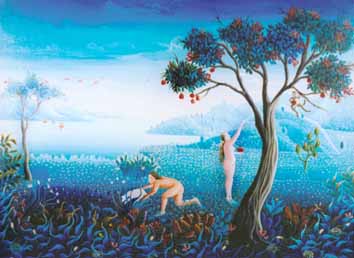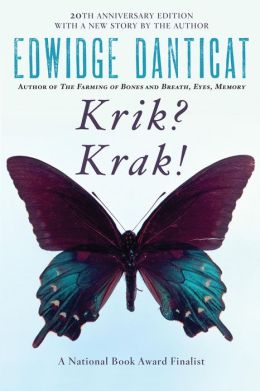Much of Haitian art is deeply integrated with
African and Taíno art traditions as well as European traditions from France and
Spain. Haitian artists tend to portray their history, their struggles, their
families, their religion, and their culture in their paintings and sculptures.
 |
| example of Jacmel School art |
In Haiti, artists tend to group themselves based on
which school of art they prefer.
Each “school” has its own qualities or set of styles they tend to
utilize, based on its location. For example, artists at the Jacmel school (on
the southern coast) tend to use the majestic mountains and coastal regions in
their paintings, while artists at the Cap-Haïtien School (on the northern
coast) depict city life. The Saint-Soleil School embraced abstract art,
especially of humans, and much of their art is intermixed with many Vodou
themes and symbolism.
 |
| example of Cap-Haïtien School art |
There are several painters from the Artibonite
region who have developed their own styles that seem to be what many people
identify as Haitian art. These
styles often use earth tones or subdued tones, and figures are often outlined
in black along with the use of geometric shapes.
 |
| by Levoy Exil |
Some of the more well-known artists in Haiti
include Levoy Exil (abstract and primitive style painter, founding member of
Saint-Soleil Art movement), Prosper Pierre-Louis (another founding member of
Saint-Soleil Art movement, painter of mystical and vodou themes), Louisiane
Saint Fleurant (known as a vibrant folk painter, she was also active in the Saint-Soleil
Art movement), Laurent Casimir (famous as a market painter), and Jean-Michel
Basquiat (American graffiti/street artist, his father was Haitian).
Literature in Haiti is written in French and in
Creole. There’s actually a kind of
debate over which language to write in.
French is normally the language of anything official and of education in
Haiti; however, Creole has kind of became a national language, a language of the
people. Linguistically speaking, Haitian Creole, or Kreyòl, is based on French,
but it also has elements of Taíno and of African languages (namely Fon, which
is part of the Niger-Congo language family spoken in Benin. And this makes
sense considering many slaves were taken from West Africa.). While many writers
choose to write in French, viewing Creole as more of spoken language, other
writers use Creole as the language in which they want to communicate through
their writing, telling their stories from the inner part of their souls. And it
also depends on what kind of writing it is and who the audience is. Oftentimes,
poetry, drama, and dialogue will be written in Creole.
A lot of Haitian literature falls under political
writings and encompasses social and political themes. Early literature here
(most likely written by the French colonists) was still centered around Paris
and France. Very little of what actual Haitian life was like was recorded.
There were, of course, historical accounts and journals published, but it was
no doubt from the colonist’s perspective. Poetry was still a popular form of
literature, and newspapers were beginning to be established, publishing many poems
written during the early 1800s.
As the 20th century rolled around,
magazines started to be published, and much of the literature during this time
was starting to reflect the people’s sentiments toward national identity and
political stability (or rather instability), and social realism in literature
was a key characteristic of this time period. Many Haitians left the country
during the middle part of the 20th century in search for a more
stable life elsewhere.
Some of the notable literary figures from Haiti include
Frankétienne (poet, playwright, considered one of Haiti’s most prominent
writers who writes in both French and Creole), Lyonel Trouillot (poet,
novelist, journalist, professor), and Edwidge Danticat (Haitian-American, she’s
the author of Krik? Krak!).
Up next: Haitian music and dance



No comments:
Post a Comment